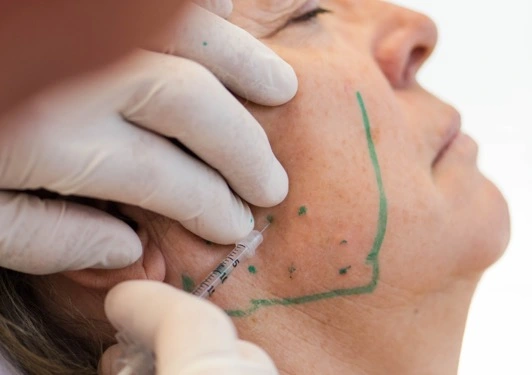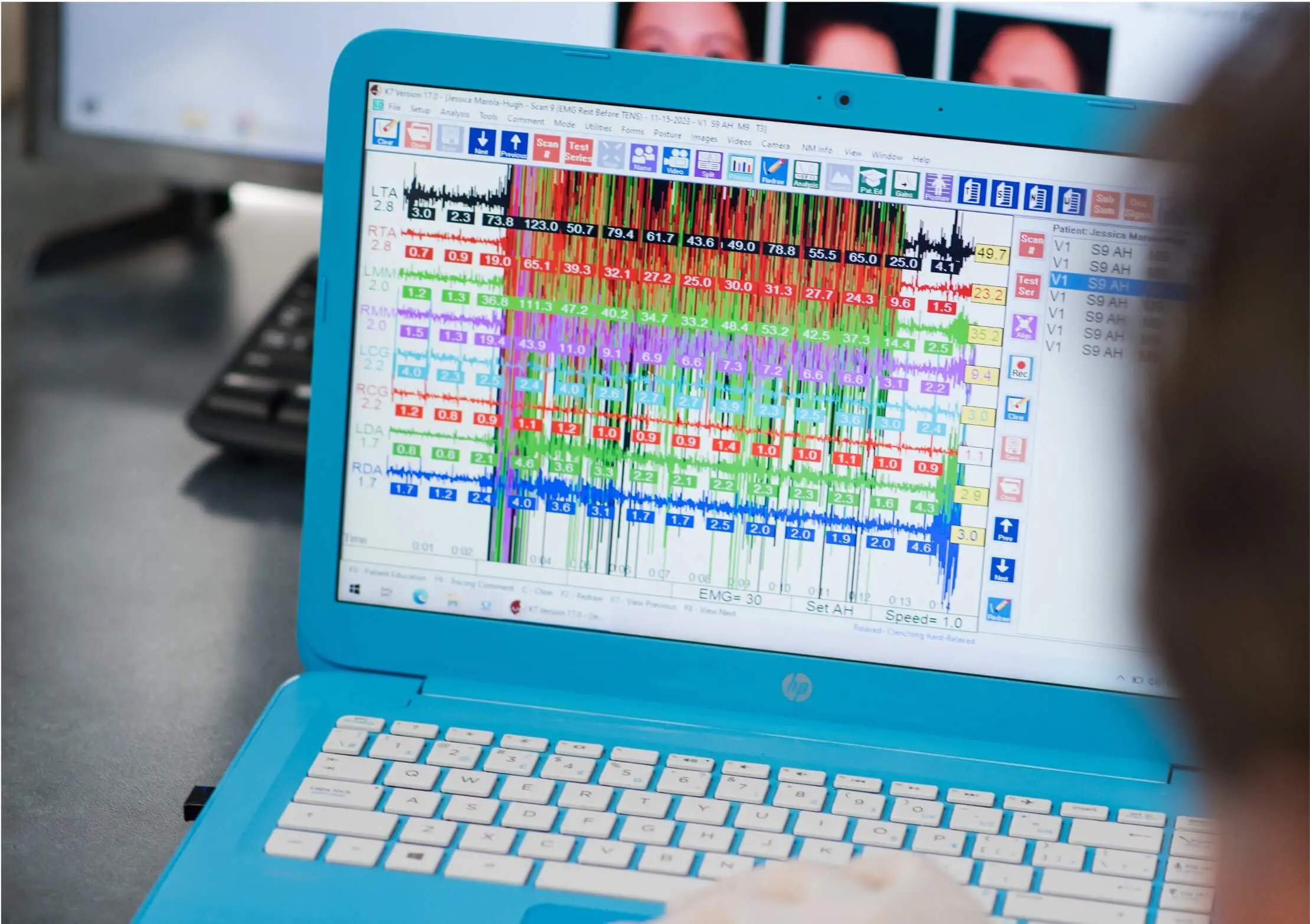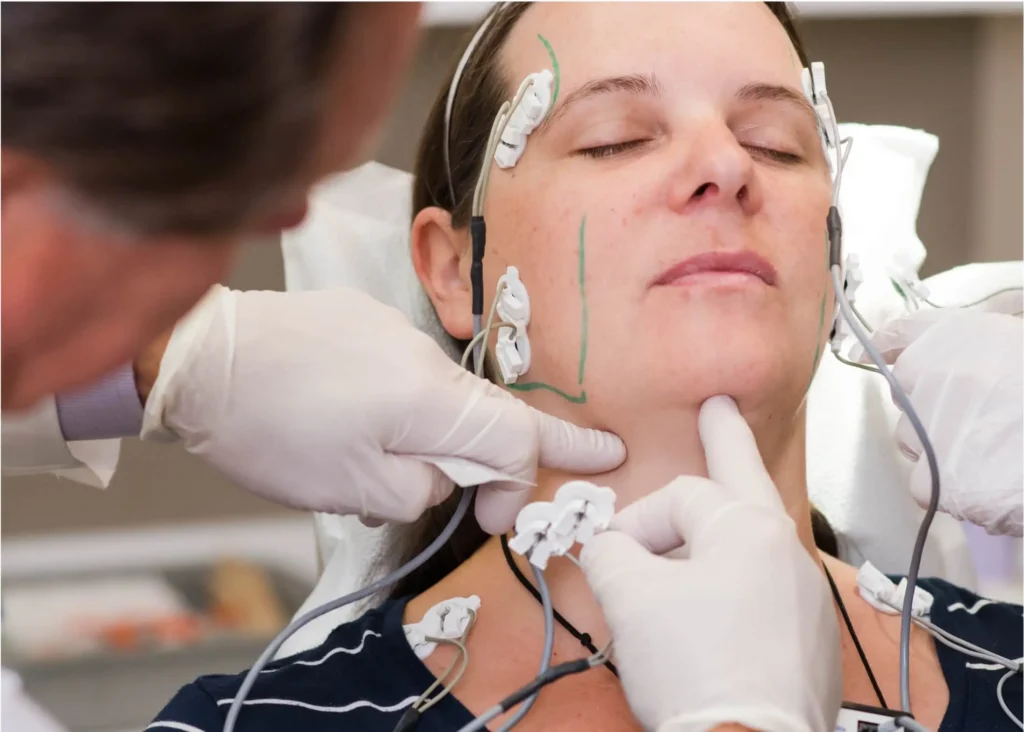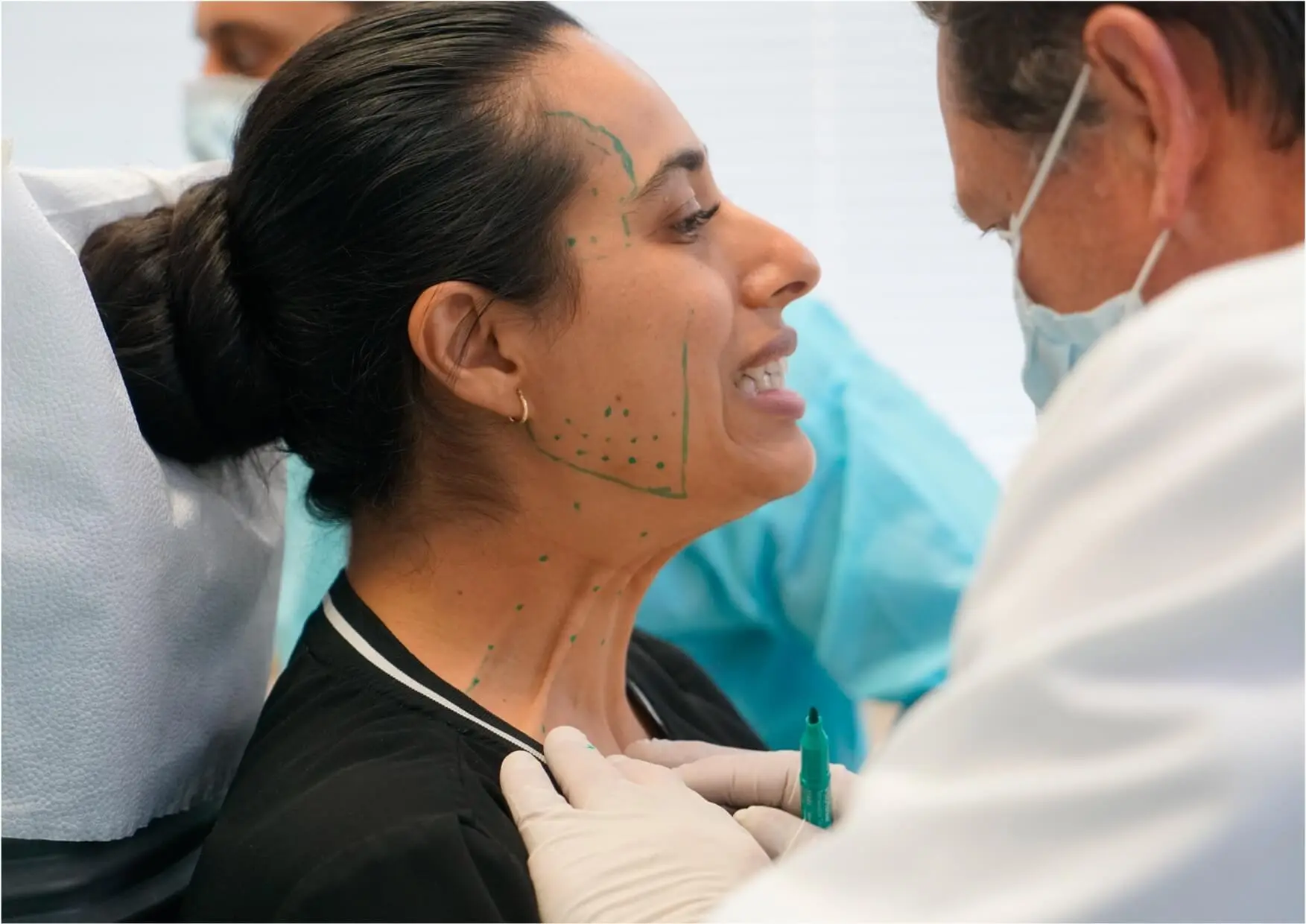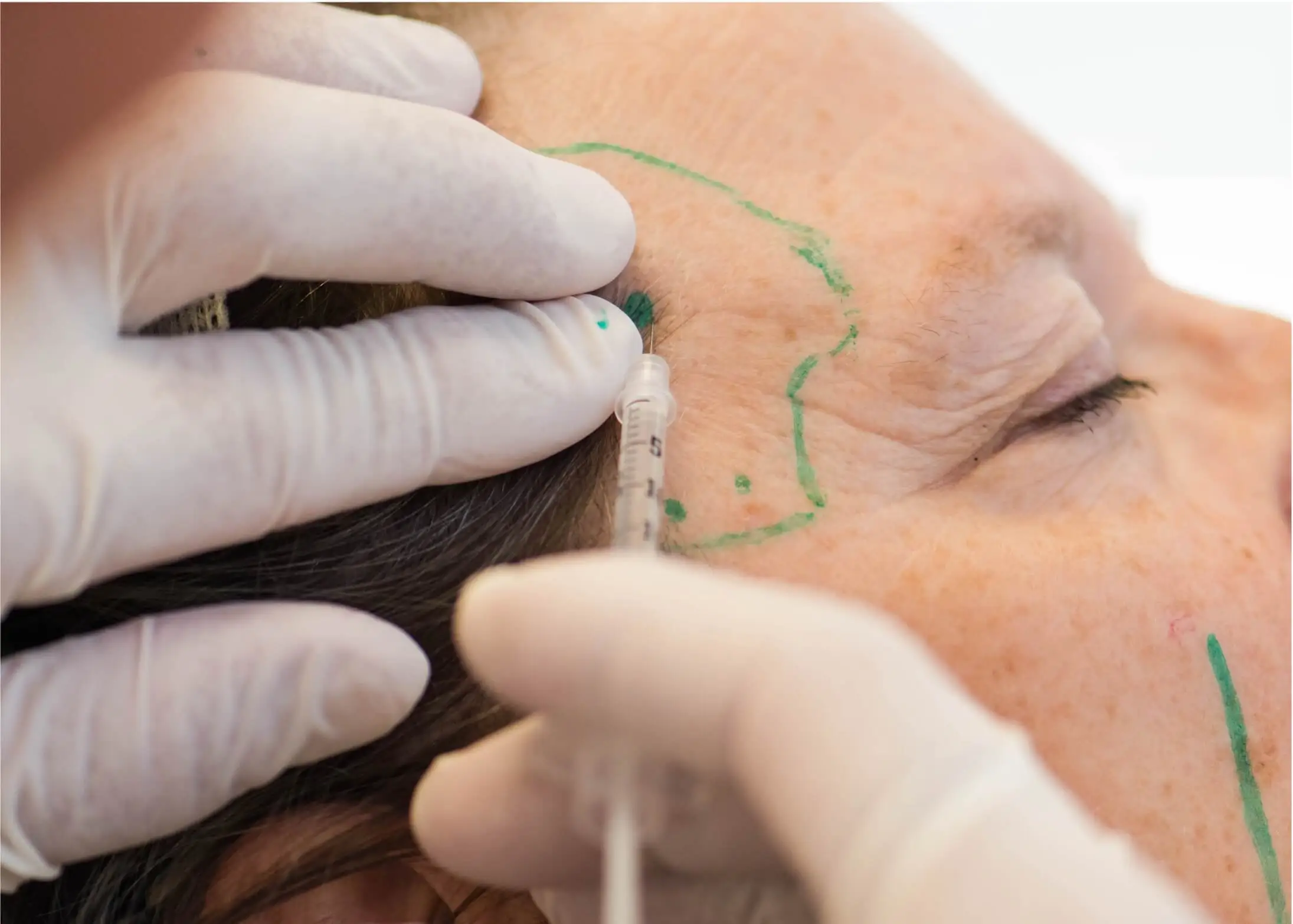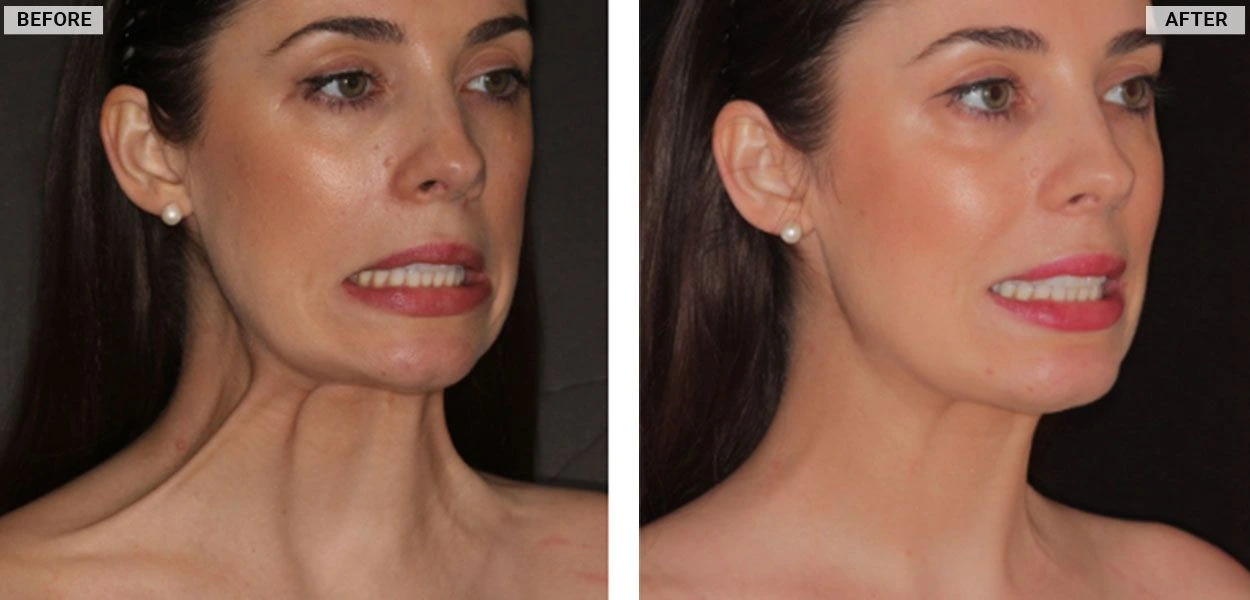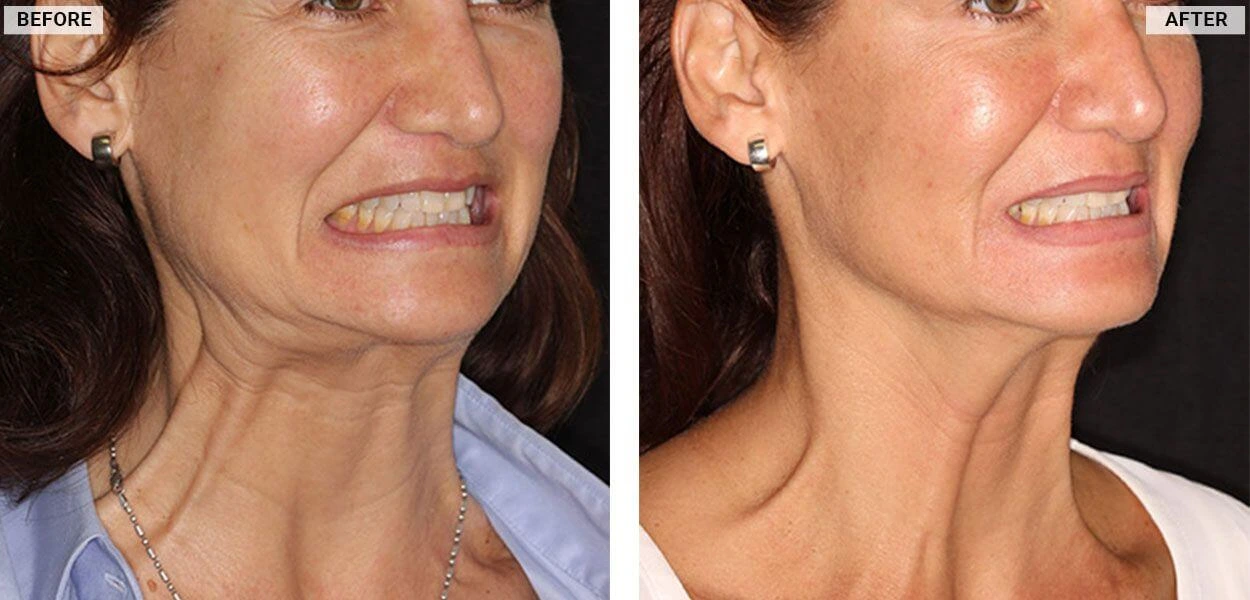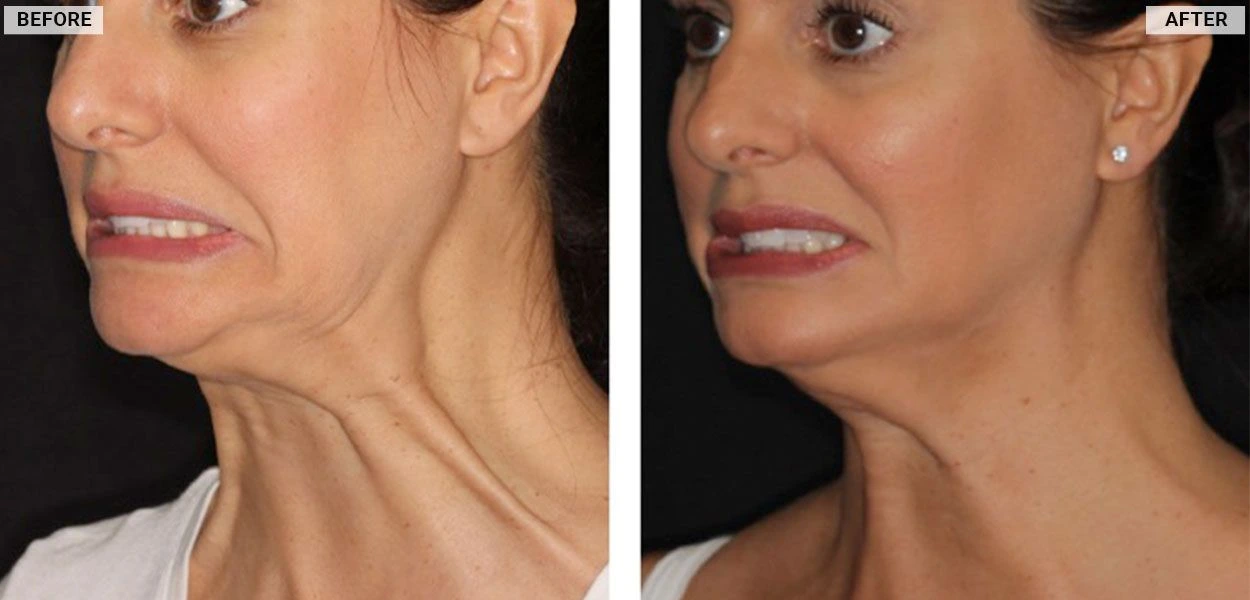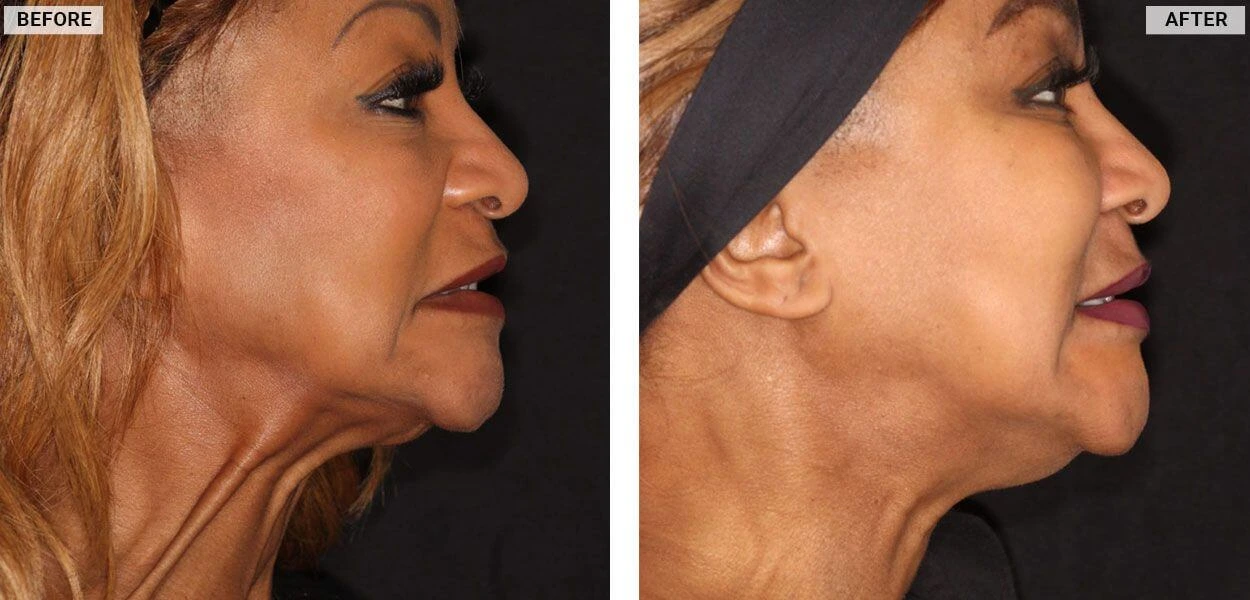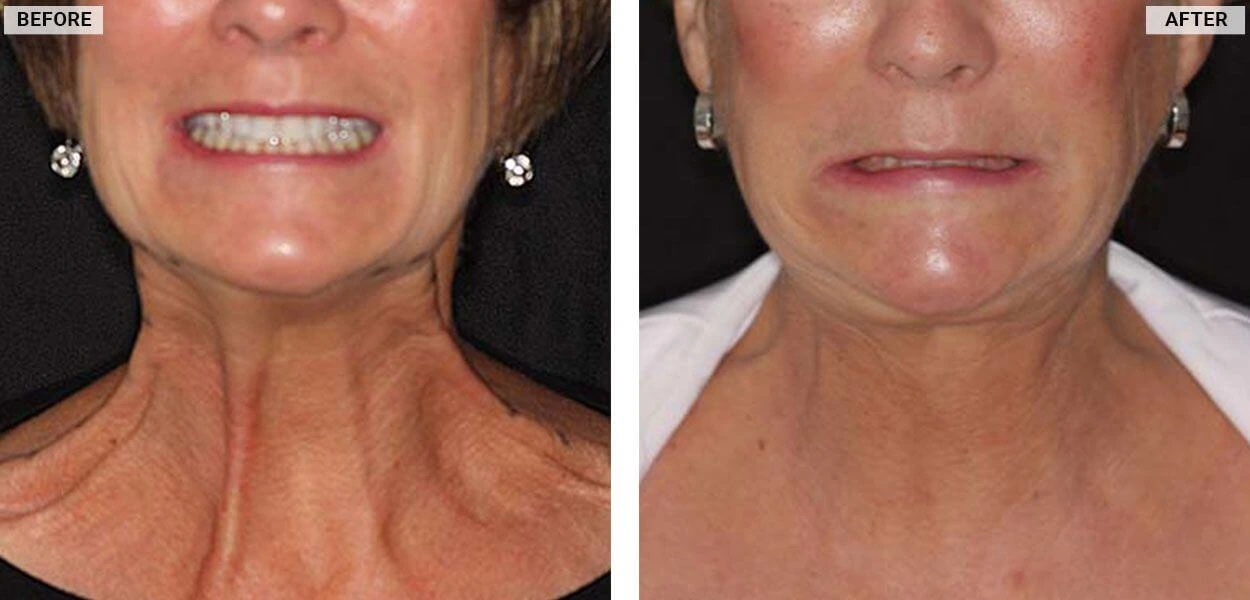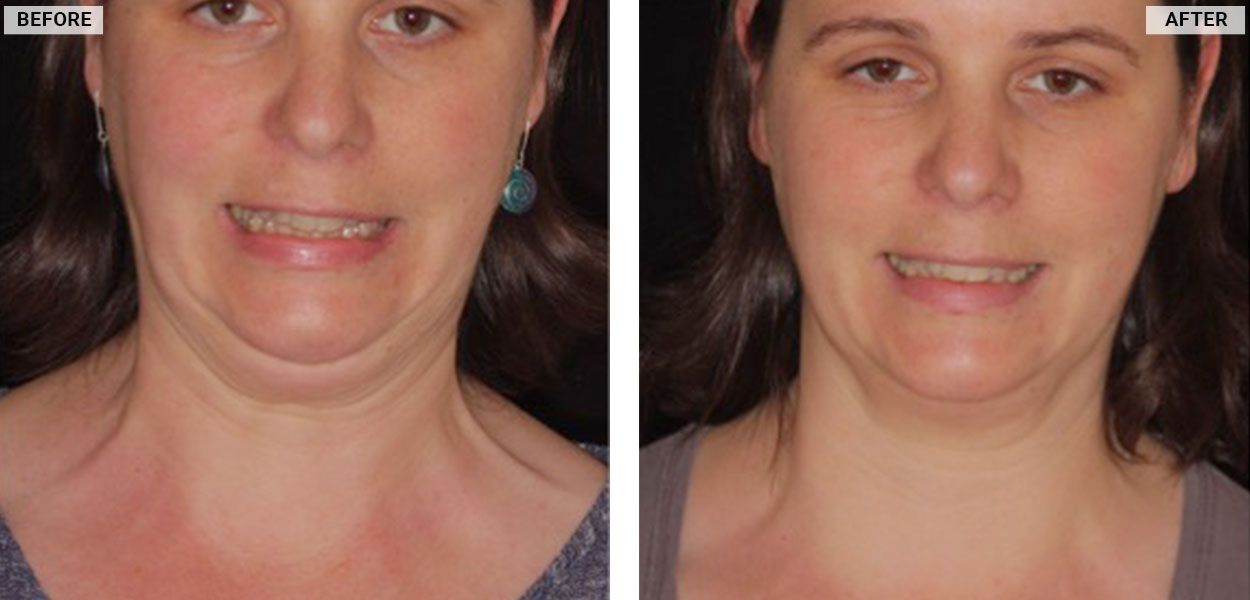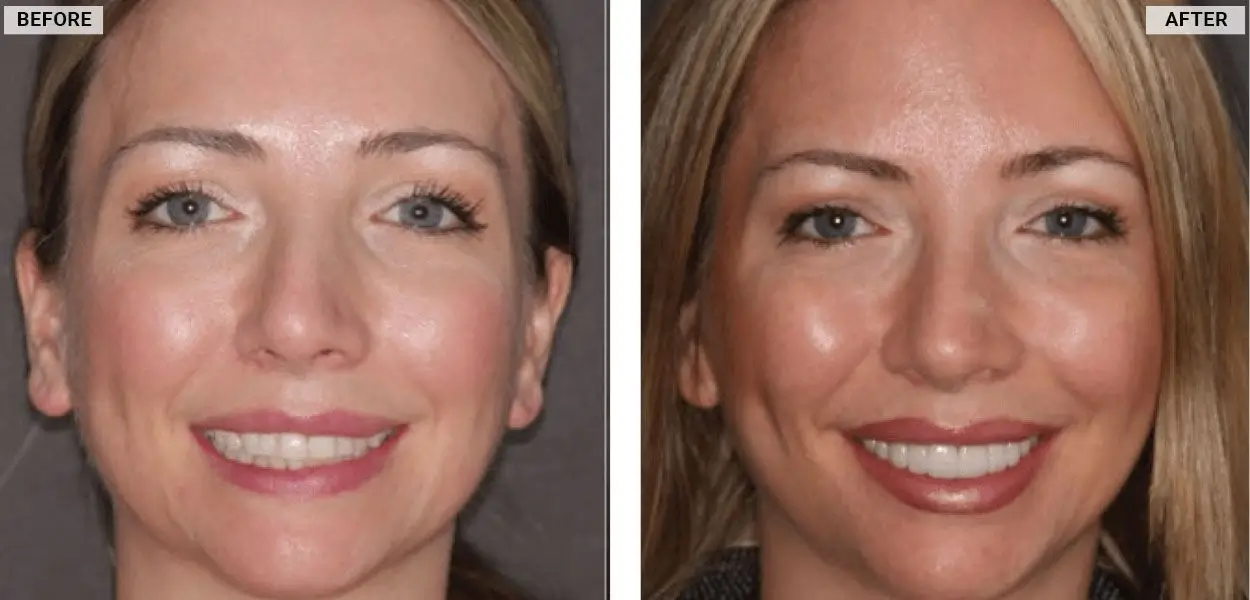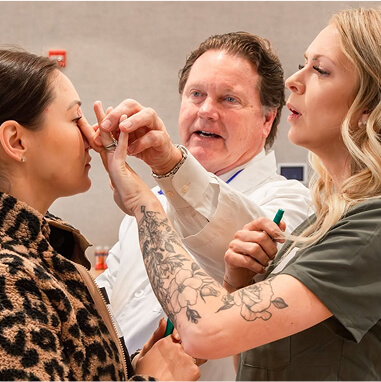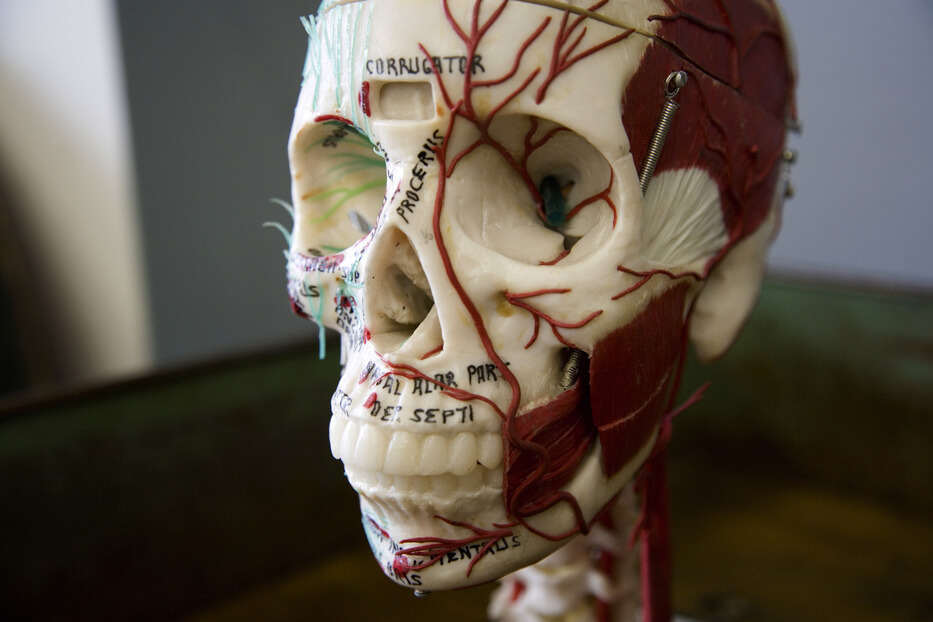What you’ll learn
Integrate electromyography (EMG) analytics with therapeutic Botox® treatment to help identify overactive muscles and optimize TMD treatment outcomes.
Master advanced injection techniques for the mid-face, lower face/neck, incl. treatment of platysma bands, gummy smile, masseter hypertrophy & more.
Understand the role of Botox® in managing myofascial pain & muscular dysfunction, with a focus on evidence-based approaches to complex anatomy.
Meet the Clinical Director

Dr. Warren Roberts
Co-founder & Clinical Director
Dr. Warren Roberts is the Co-Founder and Clinical Director for the Pacific Training Institute for Facial Aesthetics and Therapeutics. He is a retired Clinical Professor in the department of Oral Health Sciences at the University of BC
Dr. Warren Roberts is the Co-Founder and Clinical Director for the Pacific Training Institute for Facial Aesthetics and Therapeutics. He is a retired Clinical Professor in the department of Oral Health Sciences at the University of BC
More

Dr. Kimit Rai
Clinical Instructor
Dr. Rai is a graduate of the University of British Columbia and has been B.C. Board Certified in Plastic Surgery since 1975. He has also been American Board Certified in Plastic Surgery since 1977. From 1989 to 1999, Dr. Rai was Chief of Surgery for the Simon Fraser Health Region, as well as the Chief of the Department of Plastic Surgery from 1983 to 1999. Dr. Rai is also the past president of the Canadian Society of Plastic Surgeons and the Northwest Society of Plastic Surgeons.
Course Details
Level 3 is an advanced Botox® course that includes an online didactic section (28 hours & exam), followed by a 2-day clinical session (16 hours) held at select clinics in Vancouver.
The online portion introduces how PTIFAT pioneered mid-face injections and coined the term “Mid Face Expression” (MFE). The use of the Roberts Facial Rejuvenation Photography series allows you to see the lines, creases and folds created by the MFE. Using precise markings, the PTIFAT Injection Technique and low dosage, learn how to control the musculature creating these unwanted infra-orbital lines, naso-jugal grooves, bunny lines, smoker’s lines and nasolabial folds. Habitual subconscious activation of the lower face muscles turns the smile line into a “green bean down” appearance. These expressions blemish the skin with lines that exhibit sadness and depression. In this advanced Botox® course, learn how to turn the smile into a “green bean up” as well as advanced applications including for hyperhidrosis.
Understand how activation of the Platysma musculature accentuates the muscles of the lower face and turns the smile to a “green been down”. In addition, subconscious activation of Platysma enlarges the soft tissue, creating horizontal ‘necklace lines’ and creates the hated anterior, lateral and posterior jowls. The posterior ‘PTIFAT Platysma bands when present, indicate hyper muscular activity indicative of bruxing, grinding, TMD and tension type headache. Learn how sensory input from the head and neck, and how overload of central and peripheral sensitization on the trigeminal nucleus can lead to referred pain.
Advanced Botox® Training: Mastering Therapeutics & Beyond Aesthetics to Comprehensive Patient Care
Transform your practice with advanced Botox® techniques that bridge therapeutic relief and aesthetic outcomes. This comprehensive Botox® course equips you with precision dosing strategies, EMG analytics and anatomical expertise to deliver superior results for both therapeutic and aesthetic patients. Additionally, you will learn:
How higher dosages than those used for aesthetic treatment alone result in reduction of headaches and migraines. A threshold dosage, carefully placed, must be reached in order to obtain therapeutic relief.
How to incorporate EMG analytics when treating your therapeutic patients can assist with determining the muscle activity, dosage, timing and improved records & patient care.
The relationship between the secondary and tertiary mechanisms of action of botulinum toxin and the synergy between aesthetic and therapeutic results. Further understand the relationship between “looking good” and “feeling good”.
How to significantly reduce the amount of dermal filler in the mid-face and lower-face after developing an understanding of how to use advanced levels of botulinum toxin.
How to successfully treatment plan and mark your advanced botulinum toxin patients with confidence, after attending the advanced hands-on anatomy review focusing on the mid-face, lower-face and neck.
Your Online Learning Journey
6 sections • 123 lectures • 17 total length
Overview
55 min
Hyperhidrosis
13 min
Overview
16 min
2.1 - Introduction
1 h 23 min
2.2 - Complex Anatomy
56 min
2.3 - Marking Sequence
56 min
2.4 - Injections
28 min
2.5 - Uploading into Facetec
33 min
2.6 - Historical Markings
33 min
2.7 - Recare
48 min
2.8 - History Taking
12 min
2.9 - Treatment Sequence
52 min
Overview
20 min
3.1 - Introduction
51 min
3.2 - Anatomy
47 min
3.3 - Marking Sequence
1 h 32 min
3.4 - Injections
23 min
3.5 - Uploading into Facetec
124 min
3.6 - Historical Markings
18 min
3.7 - Recare
11 min
3.8 - History Taking
14 min
3.9 - Treatment Sequence
35 min
Overview
31 min
4.1 - Introduction
2 h 0 min
4.2 - Anatomy
28 min
4.3 - Marking Sequence
44 min
4.4 - Injections
17 min
4.5. - Uploading into Facetec
12 min
5.1 - Myofascial Pain
2 h 35 min
5.2 - EMG Demo
59 min
5.3 - MG Placement
7 min
5.4 - Botox for TMD, Migraine & HEadache
2 h 31 min
2-Day Clinical Session
Day 1: Advanced Anatomy and Integrative Cadaver Lab
Dr. Roberts provides an in-depth review of anatomy focused on the of the mid-face, lower-face and neck. In this integrative skull & cadaver lab, learn how surface features and bony landmarks relate to underlying musculature.
*Please note, you will be anatomically marking up to 15-20 other practitioners, and those practitioners may be marking you as well. The areas are from the coronal suture to the trapezius to the platysma on the chest (pec major).
Understanding the source, pathways and overlap of the cranial nerves provides the foundation for understanding myofacial pain and the synergy that exists between aesthetic and therapeutic botulinum toxin therapy.
Day 2: Clinical Hands-on
Day 2 is an advanced clinical hands-on practicum where you will have the opportunity to inject aesthetic cases focused on the mid-face, lower-face & neck, as well as myofascial pain patients while incorporating EMG analytics.
Understanding the source, pathways and overlap of the cranial nerves provides the foundation for understanding myofacial pain and the synergy that exists between aesthetic and therapeutic botulinum toxin therapy.
What to Expect
Master the Following Treatment Areas in Level 3:
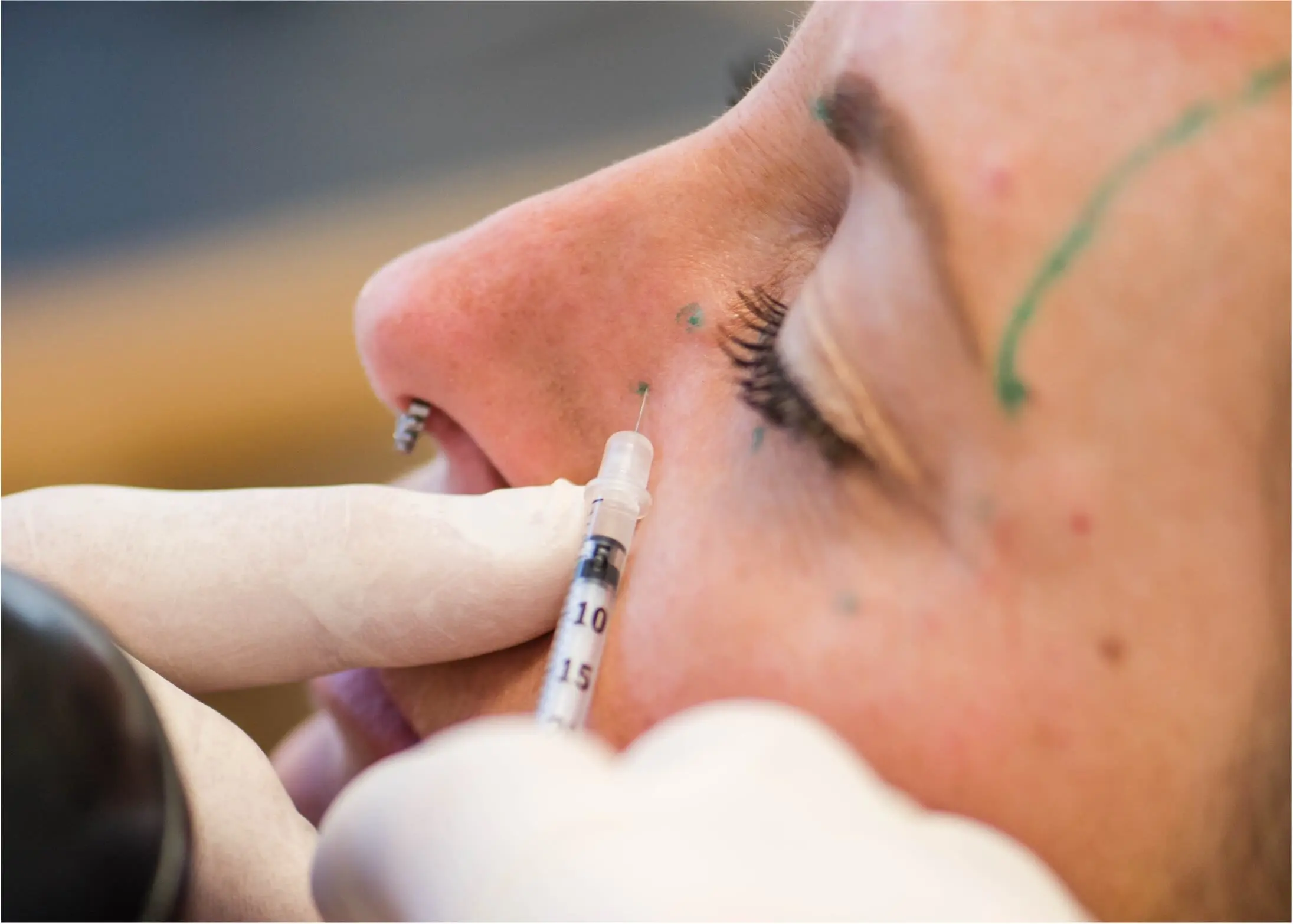
Mid-Face Expression (MFE)
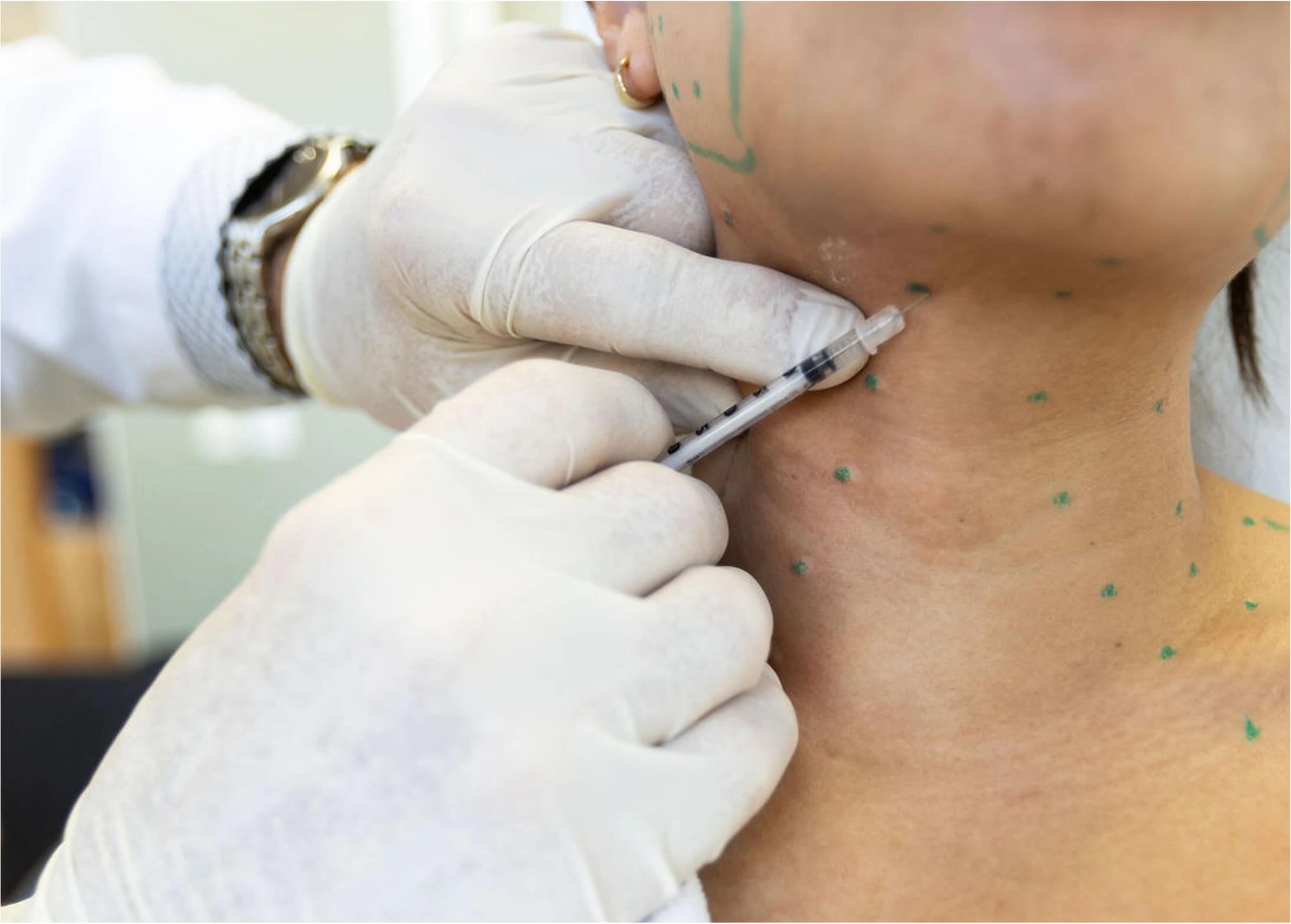
Platysma Bands
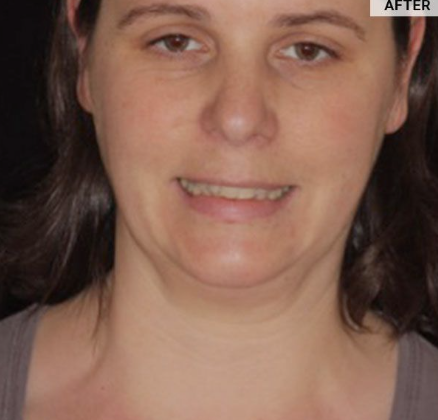
Lower Face
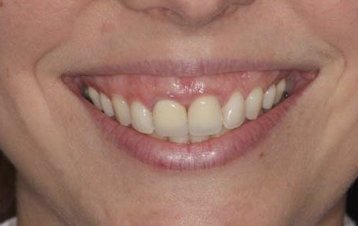
Gummy & Canted Smiles

Myofascial Pain
This Course Is Ideal For

Dentists
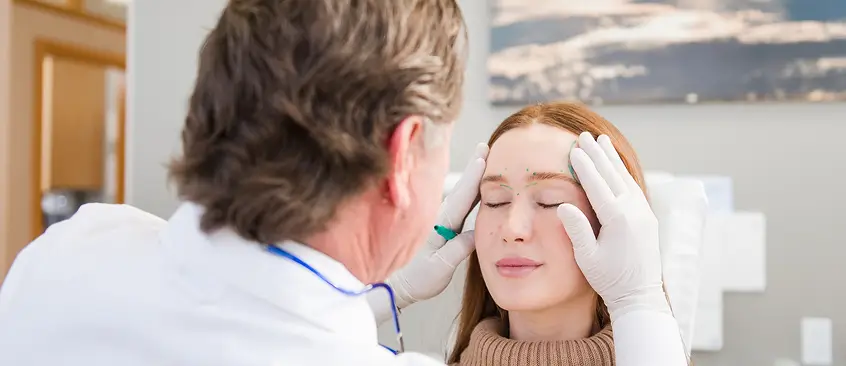
Physicians
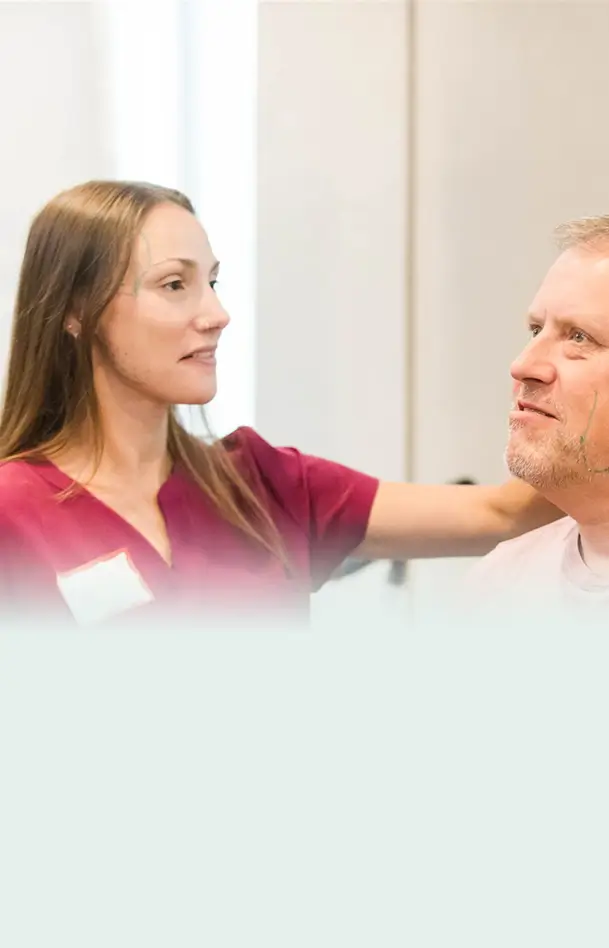
Nurses
Clinical Support Staff Training
We offer a separate Level 3 – Team Training course for non-injector team members, focusing on clinical skills, integration, and marketing & more.
Fees & Requirements
Practitioner Tuition:
$3,990 CAD (plus GST)
Prerequisite:
Successful completion of Level 2, plus proficiency using the PTIFAT Marking & Injection Techniques (20 cases is a suggested recommendation).
Requirements:
A minimum of one patient model(s), a current license and malpractice insurance.
Patient Model:
A discounted course rate of $6/unit is charged for each patient model having Botox® treatment in the clinic. Practitioners are responsible for their patient model’s fee.
30%*
Growth in Revenue
* PTIFAT-trained practitioners see a 30% increase in annual revenue within the first year
Before and Afters
The following are typical before-and-after results you can expect to achieve after completing the Level 3 – Advanced Botox® course. All photographs and treatment records are securely stored, managed, and organized using Facetec, a software which supports portfolio development to help build patient trust.
Course’s FAQ
Accordion content
Accordion content
Accordion content
Accordion content
Still Have a Question?
Reach Out Us
Call Us
CE/CME Recognition & Accreditation
PTIFAT is an ADA CERP recognized provider. ADA CERP is a service of the American Dental Association to assist dental professionals in identifying quality providers with continuing dental education.
ADA CERP does not approve or endorse individual courses or instructors, nor does it imply acceptance of credit hours by boards of dentistry. PTIFAT designates Level 3 for 44 hours of continuing education credits.


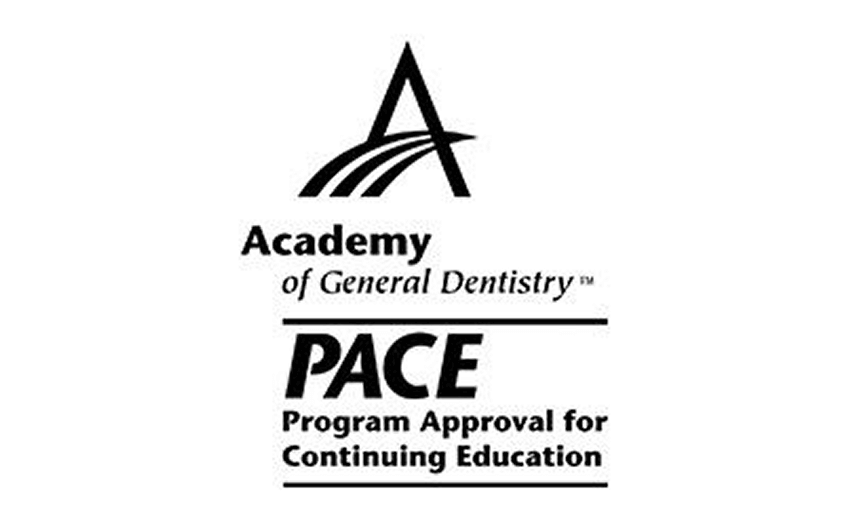
Our graduates success stories
5.0 (250+ Reviews)
+8.000 Graduetes
“I attended this course many years ago, and again last weekend. It was fantastic in the past, and the content has only evolved and improved. I have extensive injecting experience, but I still gained applicable and beneficial new knowledge. For an aspiring injector, or one who has been doing it for years, this course is the North American gold standard, and I would highly recommend it.”
“Dr. Roberts course is very systematic and thorough. I feel equipped to start administering Botox in my office immediately after the course. Their online resources make it easy to prepare and study for the course ahead of time.”
“Best Course I’have taken since graduating in 1996.”
“An extremely well organized CE. One of the best hands on courses ever!”
“A great day of learning today. Attention to anatomy/ markings and injection technique is over and above many other courses. Thank you!”
The PTIFAT Training Advantage
Typical Botox Course
Hours of Anatomy
16+ Hours
1-2 Hours
Hours of Hands-on Experience
16 Hours
4 Hours
# of Patient Model Injection
8+
Rarely
Photography Education
Limited
Therapeutic & Aesthetic Applications Both Taught
Practice Integration Taught
Marketing Support
Follow-up Practice Support
Faculty Experience
Canadian Standard of Practice for facial aesthetic therapies
Our training and clinical protocols have set the standard in Canada and exceed all college requirements.
Course Objectives
- Identify and mark precise anatomical facial landmarks for placing botulinum toxin cosmetically in the mid-face, lower-face & neck.
- Diagnose and inject botulinum toxin (aka Dysport®/Botox®) for predictable cosmetic results in the mid-face, lower-face & neck.
- Diagnose and inject botulinum toxin (aka Dysport®/Botox®) for predictable therapeutic results including myofascial pain (migraine, headache & TMD).
- Describe the importance of EMG analytics in the differential diagnosis when treating therapeutic patients and myofascial pain (migraine, headache & TMD).
Registration Policy
We are committed to providing you with an unprecedented educational and clinical experience. Each course has a limited number of seats and includes a high Instructor to student ratio. In order to achieve this, we dedicate a significant amount of resources and make commitments to Faculty members, Instructors, clinical staffing, patients, venues, hotels, etc to ensure the course exceeds your expectations.
As such, your course registration is considered a firm commitment from you.
We have established the following registration policy:
- All payments are non-refundable and non-transferable, including online courses and product orders.
- It is up to each course participant to determine if treatments (ie: botulinum toxin/dermal fillers/etc) are within their scope of practice by checking in with their local provincial regulatory college. Our courses typically exceed the educational requirements laid out by regulatory colleges, however participants are responsible for determining/meeting any provincial/state governing body restrictions and/or requirements.
- Access to online course materials is granted for one year from registration.
- Course date changes for any hands-on courses (including: Level 1B, Level 2, Level 3 and Level 4, Level 5, Level 6, Refresher Course, Microneedling) are not permitted within 30 days prior to the course dates. All funds will be forfeited if the course is not attended. Changes made prior to 30 days before the course date are subject to a $500 rescheduling fee.
- Deposits are non-transferable and are used to reserve a seat for a specific course date. A deposit will be taken at time of registration, with the balance due 30 days prior to the course date.
- PTIFAT reserves the right to cancel, postpone or change any course as required.
- PTIFAT is not responsible for hotel, airfare or other expenses incurred due to course changes/cancellations.
